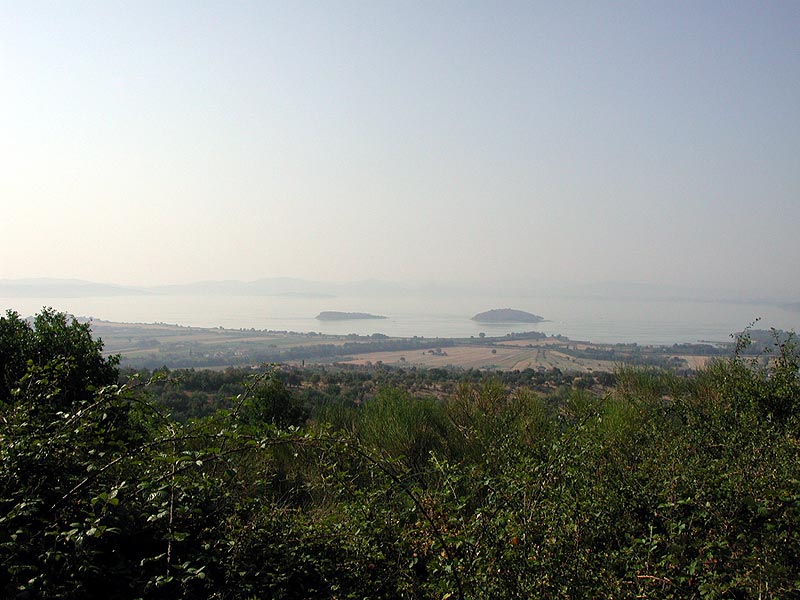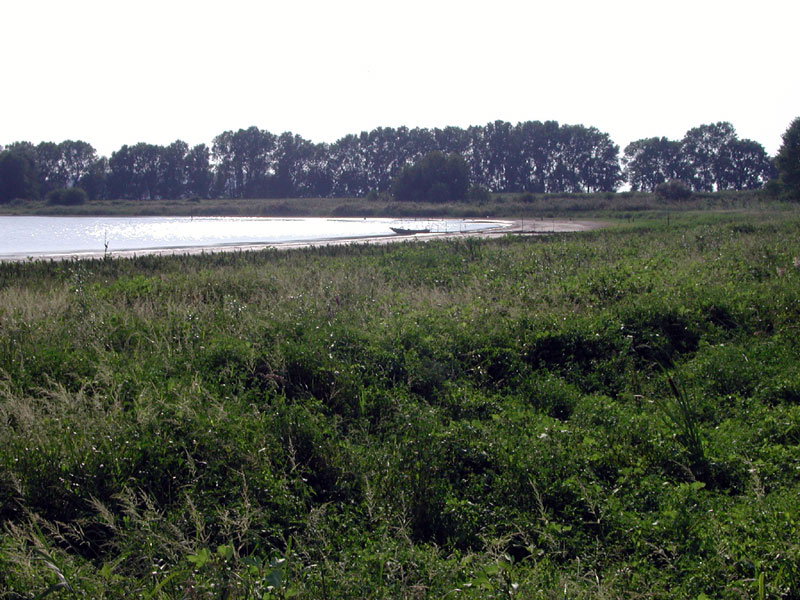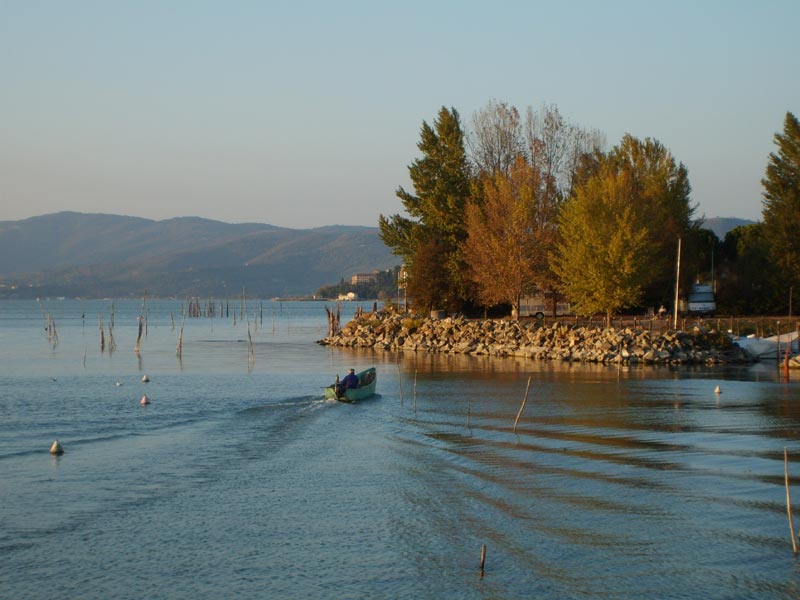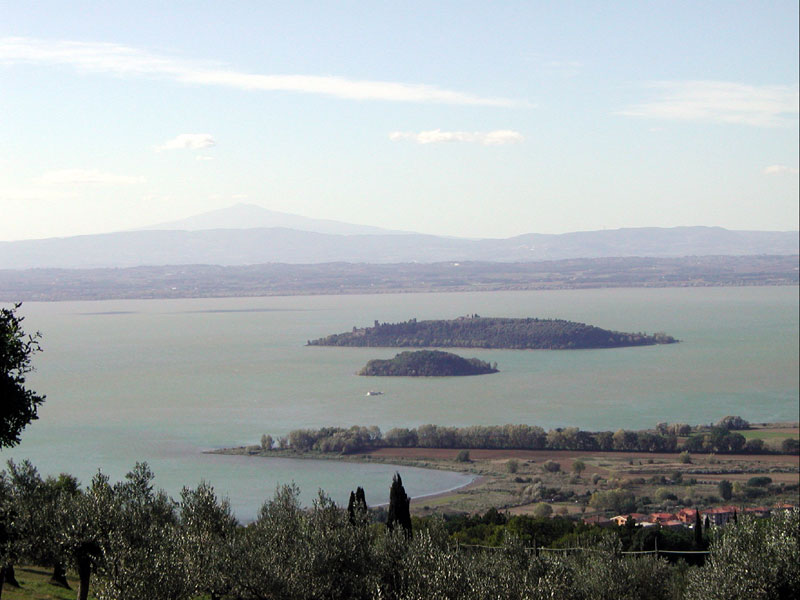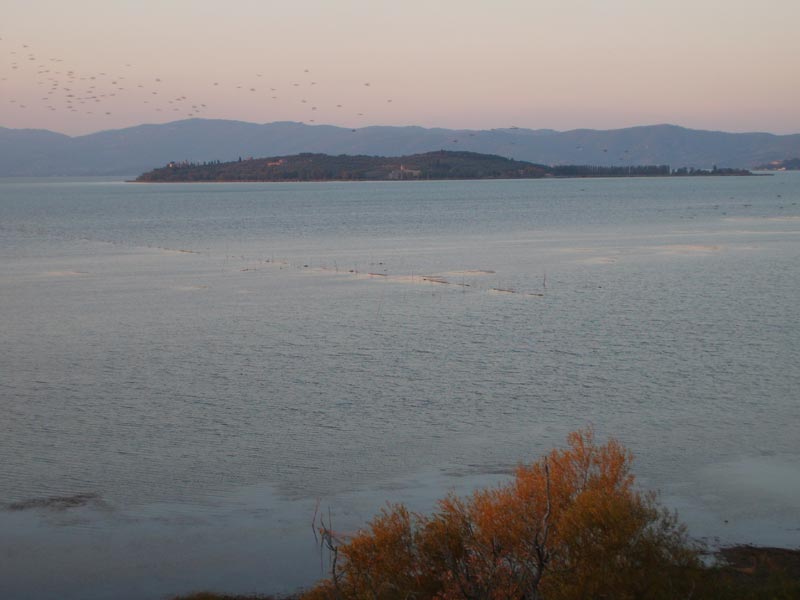Protected Area
Identity Card
- Land Surface Area: 13'200.00 ha
- Regions: Umbria
- Provinces: Perugia
- Municipalities: Castiglione del Lago, Magione, Panicale, Passignano sul Trasimeno, Tuoro sul Trasimeno
- Establishment Measures: LR 9 03/03/1995 - LR n. 24 del 23/07/2007
- PA Official List: EUAP0234
- Park Authority: Regione Umbria
The Park
It is the largest regional park in Umbria.
The territory extends along the perimeter of Trasimeno lake and includes three islands: Polvese Island, the largest one, property of the Province of Perugia, which is used as educational and environmental research center; Maggiore Island, the second one for size, where you can find a small fishermen village dating back to the 15th century; Minore Island, which is private property.
The Park is a wetland of great importance. The lake, set among the gentle hills of Umbria, has always represented an important wintering, rest, and reproduction area for the aquatic birds and an ideal habitat where several fish species can live and reproduce. The towns developing on its shores, the small fishermen village, and the hand-made canebrakes cutting convey to these places an "out of time" atmosphere. Fishermen are the real protagonists of Trasimeno: they have always animated the lake - as they still do - with their particular boats, braving the worst storms; they are the real guardians of the secrets of this particular naturalistic casket. Their devotion to these waters, generally handed down from father to son, as well as their knowledge of the moon phases have always made them mythical characters particularly inserted in the natural-lake context. It is still possible to enjoy the presence of people busy fixing the fishing nets and cutting the canebrake.
The Islands
The Trasimeno lake consists of three islands: the Polvese island, that is the largest one and belongs to the Province of Perugia, it is used as a didactic and environmental study center. Maggiore Island, the second one considering its size, is characterized by an enchanting village of fishermen dating back to the 15th century and by several religious-historical monuments. The Minore Island is a private ownership.
Polvese Island
Polvese Island is situated in the south-eastern part of Trasimeno and with its 70 ha is the largest of the three islands of the lake. The area is of particular naturalistic interest for the presence of a high-trunk ilex grove, a centuries-old olive grove, and a large canebrake, an ideal rest and wintering place for a great number of aquatic birds. The island, with its several evidences, is also very interesting from the historical and anthropological points of view.>>> (Italian Text)
- The Garden of Aquatic Plants (Italian text)
Maggiore Island
Situated in the territory of the Municipality of Tuoro, where you can leave by ferry boat for the visit, it is the one and only inhabited island. It still preserves the characteristic aspect of the 15th century village created by fishermen; for this reason, every year it is the destination of thousands of visitors searching for uncontaminated places.>>> (Italian text)
Minore Island
We do not have many documents about Minore Island, the smaller of the three islands of the lake. Called until the early 20th century "small island", today it is part of the Municipality of Passignano, it is private property and uninhabited.>>> (Italian text)
The Lake and its Environment
Given its considerable size and shallow water, Trasimeno Lake - of tectonic origin and set among the gentle hills of Umbria at the borders with Tuscany - has always represented a very important rest and wintering area for the aquatic birds and an ideal habitat where several fish species live and reproduce. Shallow water, luxuriant canebrakes, and clear waters rich in food are the real recipe for the presence of aquatic birds preferring marshy waters: among them, Northern shovelers, wigeons, mallards, teals, garganeys, and gadwalls.
- The natural environment (Italian text)
- "Centro Ittiogenico" of Trasimeno Lake (Italian text)
- Oasi La Valle (Italian text)
- Environmental Experience Center Isola Polvese (Italian text)



